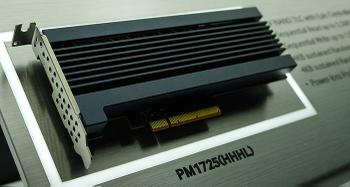DRAMeXchange, a division of TrendForce, has published a market report saying that the average contract price of mainstream PC-Client OEM SSDs has dropped by over 10 per cent each consecutive quarter for the past 12 months. The result will be a greater percentage of laptops coming with SSDs installed; this year such laptops are expected to total between 25 and 28 per cent of sales, next year SSD equipped laptops should make up greater than 30 per cent of sales.
Alan Chen, Senior Manager at DRAMeXchange, thinks that during the next year 256GB SSDs pricing will reach, or get very close to, parity with 256GB HDDs. When this happens we should see a significant rise in laptops equipped with the faster fixed storage device. The report suggests that underwhelming laptop purchase numbers and the expectation of NAND price decreases during Q3 this year meant that SSDs weren't bought up very quickly by channel distributors.
Looking ahead to H1 2016 "NAND Flash suppliers will maintain their aggressive pricing strategy," says the report. Samsung will spearhead price competition as it should be able to make use of its price advantage with 3D NAND production facilities and the introduction of associated DRAM-less products. It is noted that SanDisk is hot on Samsung's heels.
Samsung leads global SSD market
In other SSD news today The Korea Herald noted that Samsung controls 41 per cent of the SSD market at this time. The second biggest player, Intel, owns 16 per cent of the market. Charting Samsung's progress, it is said that the South Korean giant had a 34 per cent of the market in 2014.
In a final dollop of SSD related news, Toshiba is considering either a sale of a minority stake or a stock-market listing for its semiconductor subsidiary. It owns a wad of patents covering flash memory, as it it credited as inventing the technology. Meanwhile Toshiba rival Western Digital has put ink to a deal to buy Toshiba's 15-year long storage technology partner, SanDisk.








